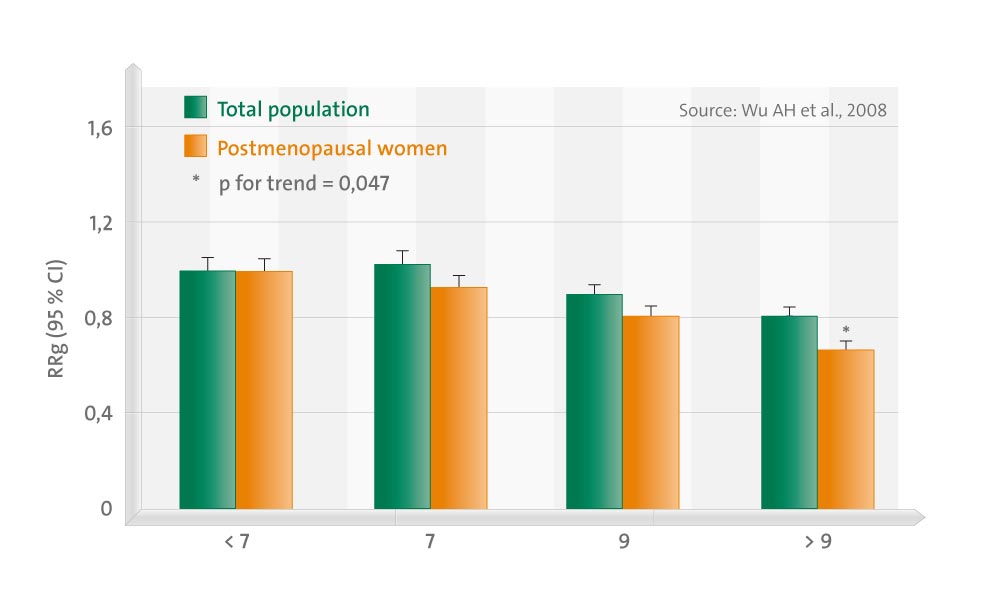Background
Sleep duration has been hypothesized to be inversely associated with breast cancer risk, possibly due to greater overall melatonin production in longer sleepers. However, data are inconclusive from the three studies conducted in Western populations on sleep duration and breast cancer risk.
Methods
We investigated the relationship between self-reported usual sleep duration determined at baseline and subsequent risk of breast cancer in the prospective, population-based cohort of the Singapore Chinese Health Study. We excluded from the study women with <2 years of follow-up due to possible change in sleep pattern among breast cancer cases close to the time of diagnosis. Five hundred and twenty-five incident cases of breast cancer were identified among the remaining 33 528 women after up to 11 years of follow-up.
Results
Among women postmenopausal at baseline, breast cancer risk decreased with increasing sleep duration (P trend = 0.047); those who reported 9+ h of sleep showed a relative risk of 0.67 (95% confidence interval = 0.4-1.1) compared with women who reported < or =6 h of sleep. This inverse association was observed primarily in lean women [i.e. body mass index below the median value (23.2 kg/m(2))] (P = 0.024). In this study population, irrespective of gender, urinary 6-sulfatoxymelatonin levels increased with increasing self-reported hours of sleep (P trend = 0.035) after adjustment for age and time of day of urine collection. Melatonin levels were 42% higher in those with 9+ versus those with < or =6 h of sleep.
Conclusion
Sleep duration may influence breast cancer risk, possibly via its effect on melatonin levels.
